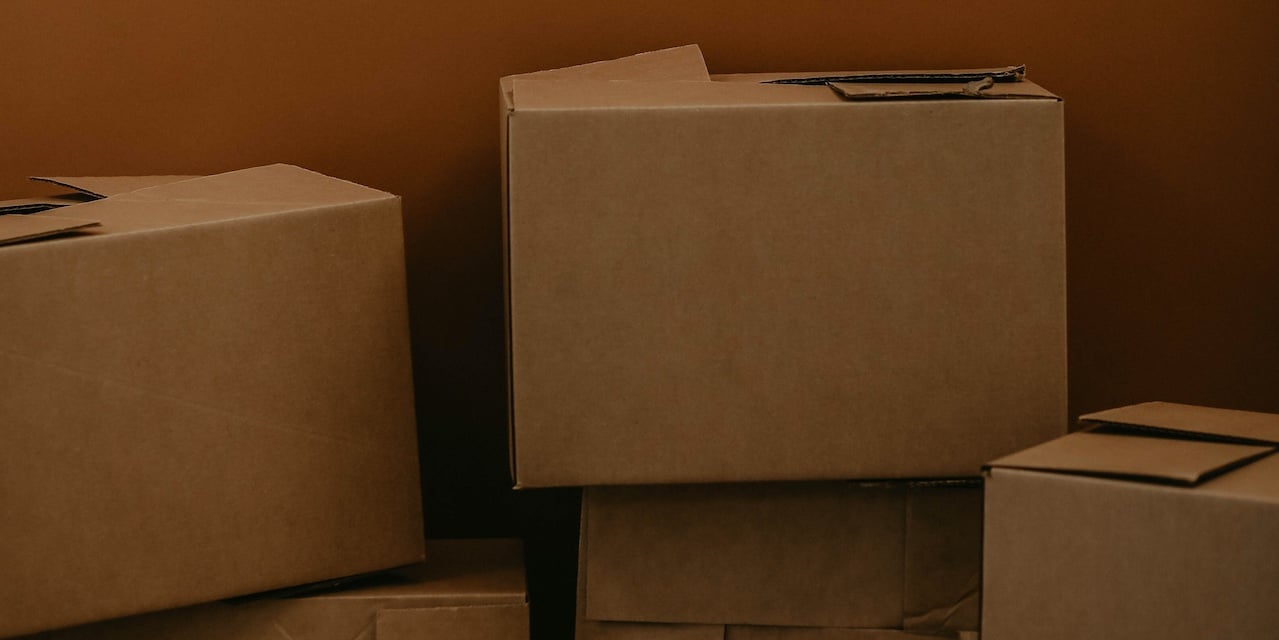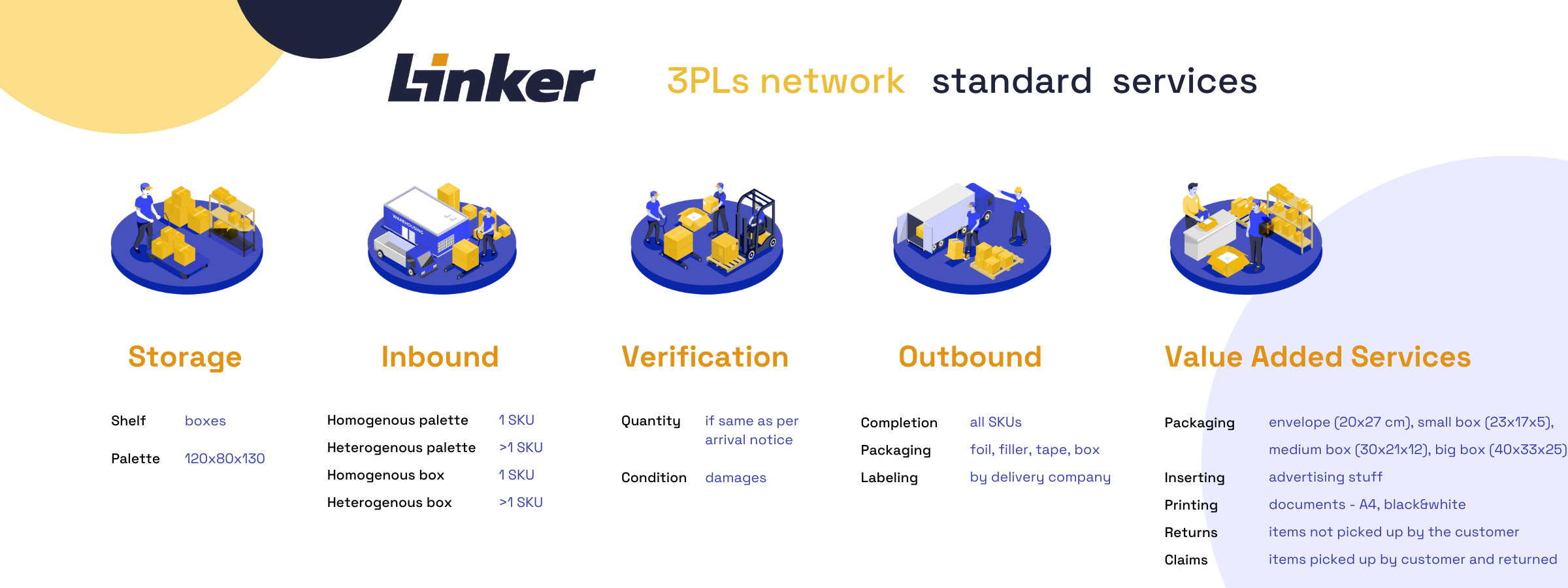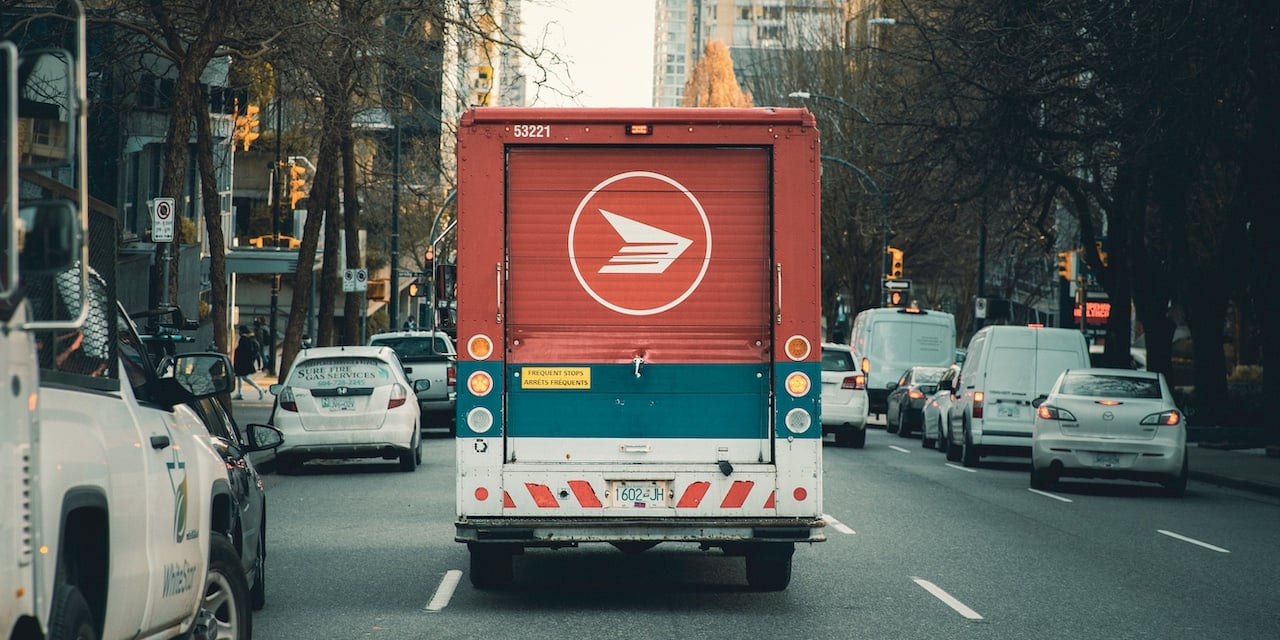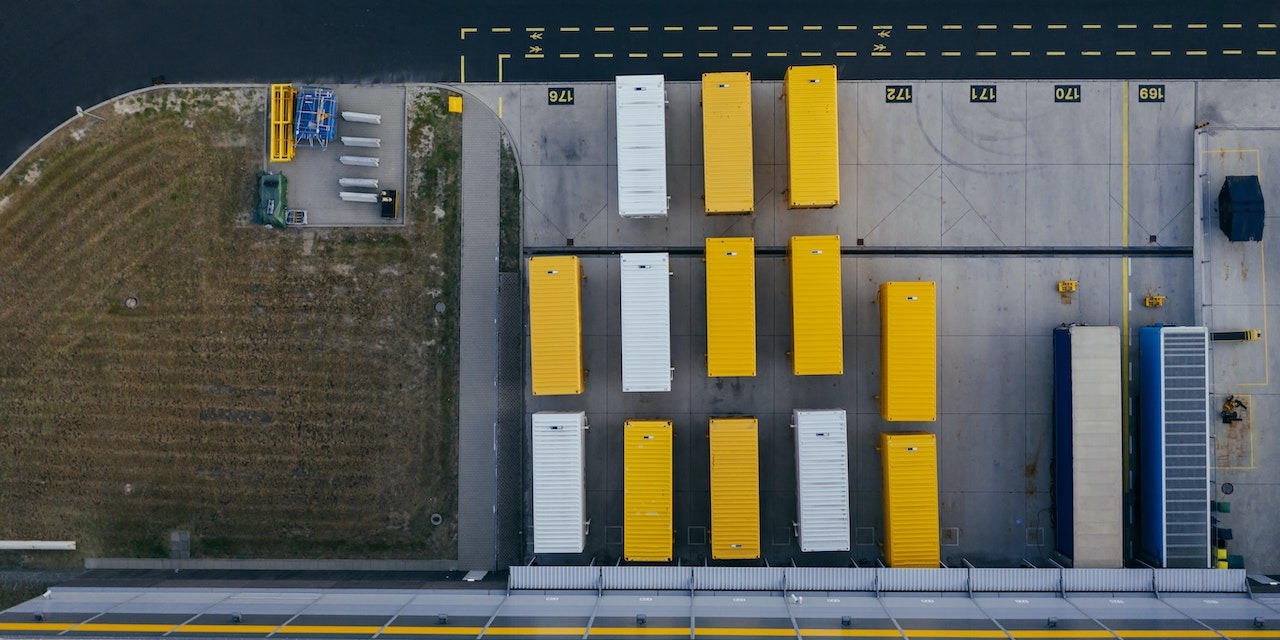In order to answer your request, we are obligated to process the data given above. Sometimes, however, we would like to use them for slightly different purposes, such as statistical data or informing you about our new products and services.We promise that we will use the given information for communication purposes only. We also remind you that you can unsubscribe from our mailing at any time (see Privacy Policy).
Every month there are more and more third-party logistics companies that offer fulfillment services for the eCommerce business. Their offers vary and the range of possibilities is very wide. How to compare suppliers? What is a standard nowadays and what is a value-added service?
How does the order fulfillment work?
What is a fulfillment network? How is it different from classic logistics operators?
A fulfillment network is a team of logistic entities that provide services from various phases of the order fulfillment process, from the moment the customer submits such an inquiry in the system, to delivery of the product to his door, and often even more, including the handling of returns and complaints.
Okay, so what's so special about this model? What are the features that distinguish this type of service from "ordinary" logistics services? How can it help eCommerce business?
First of all, the seamless process and its smoothness. The individual phases are interconnected and handled in such a way that the client does not have to worry about who exactly is doing a given job, he does not have to watch anything, only the final effect counts.
How does it work in real life? An entrepreneur is running an online store, offering various products for customers via many sales channels. When the goods are ordered, this information flows to the third-party logistics company in a preferred location. Actually, it goes directly to the warehouse of the logistics company providing fulfillment service, where the product is packed and shipped to the customer by the logistics company that is a party to the contract. Depending on how the contract was prepared, this company may also handle possible complaints and returns or contact the customer. There is no need to choose a shipping company or other services during the process, it all happens automatically and in the shortest time possible.
Process step-by-step
Let's take a closer look at the individual stages of the order fulfillment processes and what is included in the area of services at a given stage.

Pricing and agreement
The beginning of the process is mainly paperwork: gathering information about the company, and verifying individual aspects, especially in terms of non-standard options that may affect the next stages of the process. This stage requires an analysis of the nature of the company's operations, its products, and expectations. On this basis, the supplier of the fulfillment network is able to prepare a specific offer, and after its approval, proceed to further steps.
What is usually included in such an offer? How is it constructed?
In the pricing document, we can expect the specification of such items as:
- storage price (usual pallet per day)
- price for admitting the pallet to the warehouse (per pallet with one SKU)
- pick and pack per product (per one item and each next)
- return fee (per any return event)
and then the valuation of parcel delivery services, according to their weight and location.
Those are the standard items in the pricing table, but you should expect also pricing for any value-added service, such as:
- special boxes or envelopes
- barcoding
- inserting
- border fee
- claim service
It is very important to carefully read all the sub-points of the offer, analyze them and compare them with other service providers. It's not always easy to do, but it can save you a surprise and save you extra costs in the future.
After selecting the service provider, it is time to sign the contract - here it is also worth spending some time analyzing all provisions. You should expect to have included such provisions as to rights and obligations of the parties property of unites, banned ones; liability and insurance; compliance, responsibility for placing on and withdrawal from the market; confidentiality terms. Some agreements are calculated based on the number of operations (customer orders, returns, etc.).
Initial setup and integrations
After the administrative part, it is time to prepare the processes from the system and technological side. Ultimately, you need to create an environment in which the systems of all entities involved in the order fulfillment process will be able to communicate with each other, sharing data in real time. At first glance, this may seem very complex, costly, and time-consuming given the number of sales channels and potential warehousing and courier companies involved in the process. Especially if the sale concerns many countries. In addition, it is not uncommon for an interested e-commerce company to have many platforms and systems for handling orders within the company.
How efficiently the connection of the customer is depending on the level of standardization of the solutions and the availability of built-in integrations in the solution of the fulfillment service provider. If the platform has pre-built connectors, this process should run very smoothly, without the need to involve additional human or financial resources.
First inbound
When the entire infrastructure is ready to handle orders, it is time to distribute products to individual warehouses. Does this mean that the company has to send a separate shipment of products to each country?
Not. Usually, the entire batch of products is shipped to the most advantageous location and then distributed to individual sites by a fulfillment company.
The final effect should be immediately visible in the system - stock levels, quantity and type of products, etc. It's usually operated by the designated inventory management system.
Warehousing
Until the products are sold, they must be properly stored. High-quality logistics centers and warehouses offer surfaces with various features, so as to store various types of products as safely as possible: clothing, through food, large dimensions, products that require appropriate temperatures, etc.
Order receiving processes
Boom! Here it is and the order! Your customer has decided to buy the product from you, and now it's time to initiate the checkout process. Inventory must be properly updated in order not to double-sell a given product. The system must select the appropriate location for the product to be delivered as soon as possible. Payment on the platform must be successful for the system to move the order to fulfillment.
When these points are met, it's time to prepare the package for shipment.
Picking and packing
How do the individual line items end up in the box? There are several popular methods of the so-called pick & pack process, depending on the nature of the package, the size of the warehouse, and its resources. Regardless of the method, the most important thing in this process is to complete it flawlessly and quickly.
Some orders require a bit more attention and the right approach: the use of specific fillers, the addition of advertising materials, coupons - all this is done on this

Shipping
When the package is ready, it's time to ship it. It is also a stage of the process and the task of the fulfillment company to deliver the shipment to the recipient in the shortest possible time and at the best price, regardless of where in the world it is located. Shipping costs can vary, but usually, order fulfillment company picks the best offers, and moreover they can offer the prices reserved for big ones also to smaller companies.
The short shipping time is possible thanks to many fulfillment centers located in strategic places on the map. The parcel does not have to cross many borders, traveling for many days or weeks - in most countries, carriers are able to deliver the shipment within a maximum of 48 hours.

Returns and complaints
What if the customer wants to return the product or make a complaint about it? It's part of the logistics process that causes more concern and trouble for many eCommerce sellers. Completely unnecessary, because a well-organized return and complaint policy is a great argument for new customers to buy and test the product without risk and builds customer loyalty. Also, the company doesn't have to worry about shipping costs and handling the process if it works with the right partner to handle it for them. The customer sends the product back to the nearest fulfillment center without worrying about expensive shipments abroad.
PS Did you know that this whole process can also apply to products with non-standard dimensions?
What’s considered a standard service?
As you can see, the order fulfillment process is a comprehensive service and includes many stages and possibilities to suit every need. But what is considered a standard? What to expect when we enter the fulfillment network for the first time? What should be included in the price, and what needs additional payments?
Let's have a look at typical ecommerce fulfilment services.
Integrations
Actually, this is a stage before the order is processed, but we can talk about standardization here. It is about providing standard integration with the order management system, or various inventory management systems, platforms, and partner companies to efficiently handle orders. Standard integrations apply to software and solutions used on the market, or services available in various countries. Excluded from this are, for example, systems designed for the needs of a given company or very niche suppliers
Inbound
Standard inbound usually includes the process of picking up products on a pallet. We can talk about a homogeneous (one type of product) or multi-product palette. The inbound usually includes the receipt of goods, entering data into the system, and distribution in appropriate places in the warehouse. As you can guess, the homogeneous palette requires less work and is easier to accept. Often, however, the quantities of products shipped to the warehouse are smaller, and therefore the goods on the pallet are mixed.
Verification
During the receipt of goods at the warehouse, another very important process takes place, verification. The warehouse is obliged to check that the number of products on the pallet is consistent with the shipping documents and that there are no visible signs of damage to the goods. Standard verification does not involve more detailed unpacking and checking of shipped goods.
Storage
Each warehouse offers a wide range of options when it comes to product storage. In fact, you can find the right storage conditions for even the most unusual things. So what is the standard option?
Usually, the goods are stored in cartons of specific sizes (e.g. 40x40x60 cm), on appropriately marked shelves, or on pallets with dimensions of 120x80x130 cm.
Outbound
Outbound, the process of handling the order and preparing the goods for shipment - what does it normally contain?
Naturally, it consists of collecting all SKUs included in the order, packing and securing the products for shipping (foil, filler, tape, cardboard), and sticking a courier label, to properly fulfil customer orders.
Value Added Services
In addition to the standard steps, operators often offer so-called value-added services. They are still considered a standard option and include activities such as:
- various forms of packaging (envelopes, boxes in various sizes)
- inserting, i.e. adding advertising materials to packages
- printing, i.e. printing, for example, a return form, in A4 format in black and white printing
- returns, i.e. handling of orders returned and missed by the customer

Customized offer – chances and dangers
What if our sale or product is so non-standard that it does not fall under the aforementioned services? Then how to deal with the handling of orders, especially international ones?
Some companies boldly claim that they do the impossible right away, and that they only need a little more time for miracles. There are probably opportunities to handle logistics processes in almost every case, whether you are selling a very custom product or shipping to strange corners of the world.
Nevertheless, it should be borne in mind that each element of the process introducing a certain non-standardization may significantly complicate the operation, extend the time or increase the risk of errors.
In the beginning, non-standard integrations and the need to adapt the fulfillment platform to your system may turn out to be quite a big problem.
Another trap may be an overly complicated form of shipping - of course, customer experience is very important, but adding highly personalized options will also have a negative impact on the time and cost of handling orders.
On the other hand, it may seem that bulky products or products that require special storage will be a big problem. Well, today's warehouse offer is so extensive that it copes with this type of challenge really well.
Are you interested in fulfillment services for your e-commerce?
A fulfillment network is a living tool that is growing proportionally to the needs of our customers. If you are interested in a destination we do not offer yet, please let us know. We can support your activities, including in other countries, without any additional costs.






